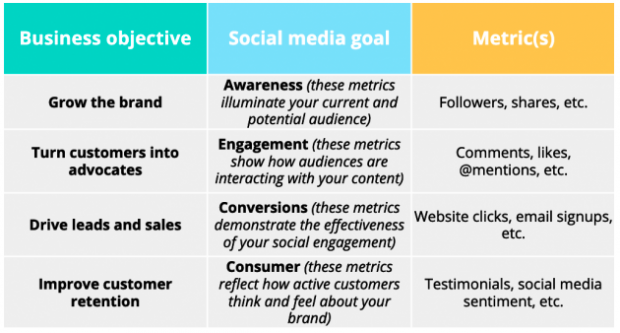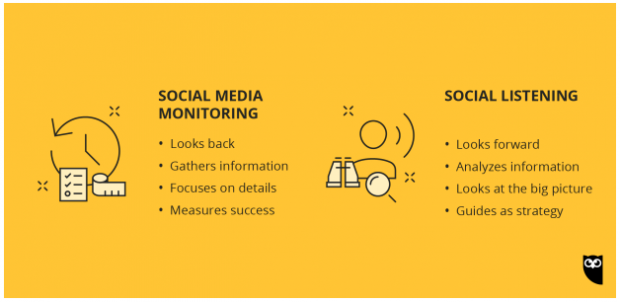So much to do on social media, so little time. And so many methods to do it, too. Some right, some not-so-right.
However do not worry, we have got you covered with the next must-follow social media best practices.
14 social media best practices for 2019
1. Learn everything you could about your audience
The first social media best practices?
When you do not know who your audience is, you could not give them what they need. And then they will not provide you with what you need (their business).
Who’re you trying to connect with?
Millennials, single mothers, kids with kanines? That’s a begin, however, get as particular as you could to greatest engage them. Do the analysis and rely more on data, less on your gut.
Get clear about your current customers, too. So you could go find and make new ones with the same traits. Such as:
- Their age
- Where they live
- What languages they speak
- How much they earn
- How much they spend
- What they purchase
- What they do in their spare time
- What stage of life they are in (student, parent, retiree)
Other tactics to consider for learning about your audience embody:
- Analyze site and social media analytics
- Be clear about the value for your services and products
- Create a goal market statement
- Test your social adverts on your target market
- Lather, rinse, repeat—to learn new methods and means over time
Want to dive deeper into this topic? We have a guide to conducting audience research that features a template to help you build customer/audience personas.
2. Choose which networks to use (and which to ignore)
Because too many entrepreneurs spread themselves too thin across too many networks.
How do you decide which networks to show up and share on?
Research the demographics. It will assist you to determine which networks to use—and which to lose. These are the sorts of insights you need to be looking for:
Instagram demographics
- A billion users, 500 million of them active daily
- 71% of Americans between 18 and 24 use this network
- 43% African Americans, 38% Hispanic, 32% white for U.S users
Facebook Demographics
- More active monthly users than anybody country’s population
- 1.4 billion daily users, and 2.13 billion monthly ones
- 25-34-year-olds are the largest segment for U.S. users
- 75% of U.S. adults rake in $75,000+
Twitter demographics
- Big. Political. Platform. More so than the others.
- 330 million active monthly users
- 45% of new users have college degrees
I think you get the idea.
Know more about your viewers and who uses what social network and mix these two data points to better sell your brand.
3. Have a plan
Have you made a social media strategy, summarizing what you need to do and achieve on social media?
Yes? Good job.
No? You should. Why?
To know whether you are succeeding or failing for every post, share, like and comment.
This guide will walk you through each step of crafting a winning plan. However, here are the highlights:
Set goals
Otherwise, how do you know what is working, what’s not, and what to change as you make and share content? And, track helpful metrics. Here’s a few.
Social media KPIs are also worth tracking.
Conduct an audit
Collect and examine what is working and what isn’t on social media in one place. It will assist you to plan what to do more of, what to enhance, and what to stop. Easily see:
- Who you are connecting with
- Who is connecting with you
- Which networks your target audience uses
- How your brand compares with your competitors
And… ask yourself just a few (honest) questions on your social accounts:
- Is your audience here?
- If so, how are they utilizing this platform?
- Does this assist you to achieve your business targets?
Use your answers to decide which accounts are worth keeping, or ditching.
4. Keep an eye on the competition
Because when you do not, they will get the upper hand. Also, to learn from what they are doing, to help you determine what you need to (and don’t need) be doing. Why reinvent when you could circumvent?
For your social media rivals, you need to know…
- Who they’re
- Where they’re
- What they’re doing
- What they did before
- How effectively they’re doing what they’re doing
- Any threats to your business
- Identify gaps in your own strategy
Do some intel to ask and answer…
- What networks are they on?
- How huge is their audience?
- How often do they post?
- How a lot do they engage (shares, likes, and comments)?
- What are they good at?
- And not so good at?
- What threats do they pose?
Competitors could give good inspiration for your social media activities.
Heck, I have contacted and befriended many copywriters. We share war stories about losses and victories, along with tools, approaches, and ideas for doing and being better.
You can (should), too.
5. Listen for mentions of your brand
Know what people are saying on your social media channels is one of the best social media best practices.
When you do—you could track, analyze, and reply to these conversations. When you do not—you are missing out on valuable insights for your business.
Social listening is a two-step process.
1. Monitor channels to capture mentions of your brand, rivals, product, and relevant keywords.
2. Analyze these mentions to identify what you need to do next.
Like… Reply to a happy customer (or to a troll). Check one campaign against another. Or significantly shift your brand voice and tone.
Learn how people think about you, compared to the competition. Is a competitor taking a beating in the press? Can that be a golden moment to share, show, or say?
Beat the competition to find and resolve pain points. Is somebody talking about their function that sucks? Could you rapidly add a new feature that doesn’t?
Identify influencers and advocates. Is somebody out there saying something great about you all? Maybe it is time to collaborate with them.
Listen, learn, and earn.
6. Monitor conversations which are relevant to your industry
Like social listening, social monitoring is about understanding what people think of your brand.
There are tools to help you know: who’s mentioning your brand, utilizing which hashtags, and other trends in your industry.
Consider social monitoring as the foundation for social listening. Monitor to learn from the past. Listen to make your future.
Does this picture help?
7. Establish your social media voice and tone
I’m going to blatantly plagiarize the beginning of this piece—word for word.
It’s Ok, I wrote it.
Every time you talk, write, design, post, reply, launch, thank, and connect with others… you are exercising your brand voice.
Every. Time.
Whether you consider it or not.
People are building up an impression in their mind for all of the methods you appear—online, on stage, on the phone, or in person.
Do not you think it’s greatest to be deliberate about all that?
To convey the voice and vibe for your ongoing message?
So that your followers, fans, readers, listeners, leads, prospects, and customers ‘get it’?
Here are some methods.
Find your adjectives to develop the voice and vibe for your brand’s personality. I supplied a list for you to begin (and finish) with.
Write as you talk by avoiding jargon. Jargon requires brain calories for readers to translate. However, they will not, they will just click on elsewhere.
Write from the reader’s perspective, to make them, not you, the hero in the story. Be clear so readers will understand what they’ll get from what you do.
Drop the drama. Keep away from sensational headlines. Always be clear over intelligent. This forces you to know the reader and write more to them.



